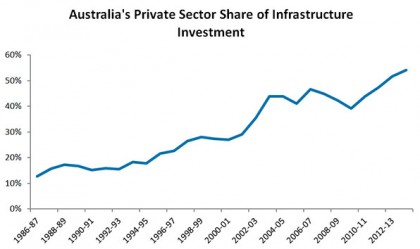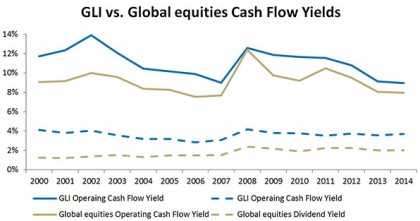An estimated US$78 trillion will be required for global infrastructure investment over the next two decades.1
The majority of infrastructure requirements are dominated by the core sectors of transport, energy, water and communications. Additional infrastructure requirements outside of these sectors include roads, airports, port and loading facilities, health, education and other community service provisions.
Regional spending requirements
Infrastructure requirements in North America, Europe and Asia vary, with spending planned to meet the needs of projects relevant to the particular region.
-
North America – an additional US$2 trillion between now and 2020
US public infrastructure spending is at a 20-year low, even with the American Society of Civil Engineers (ASCE) rating the nation’s infrastructure on average as ‘poor’.2 An additional US$1.6 trillion of funding compared to what has currently been committed is required to reach an adequate standard.
-
Europe –EUR300 billion over the next three years
During the Financial Crisis, investment fell sharply and has remained weak since. The European Commission is currently proposing the creation of these funds, with the aim of boosting long-term investment in Europe.3
-
Asia –US$730 billion per annum over the next decade
McKinsey forecasts that 70% of this figure needs to be invested in transport and energy assets.4 For example, India will require more than US$1 trillion of investment in infrastructure over the next five years, as their current inadequate transport, energy and water infrastructure is preventing their economy from growing at a greater pace.5
Governments can’t do it all
Historically, Governments were the exclusive providers of a nation’s infrastructure. Over time, and as a consequence of the global financial crisis, lower tax revenues and higher expenditure has meant that governments are increasingly relying on the private sector to help fund these investments. With governments around the world at various stages of the continuum when it comes to engaging the private sector, Australia and the UK are the most advanced. They have recognised that the private sector infrastructure companies value transparency, certainty and the ability to manage risks in the regulatory frameworks or contracts.
In addition, some governments have recognised that for new capital to undertake the required investment an attractive return framework needs to be provided. Indeed, it’s not been uncommon for regulators to offer incentives above a base level return, either implicitly or explicitly, in order for specific strategic investments to be undertaken.

Benefiting from a structural growth story
These conditions are the basis for a structural growth story for global listed infrastructure companies. The infrastructure requirement is massive, and with attractive returns and supportive frameworks we expect continued stable, reliable, cash flow growth from global listed infrastructure companies of 7-9% over the medium to long-term.
These conditions are the basis for a structural growth story for global listed infrastructure companies. The infrastructure requirement is massive, and with attractive returns and supportive frameworks we expect continued stable, reliable, cash flow growth from global listed infrastructure companies.
The stable regulation provides for reliable dividend yields of 3-4%, while returns on ongoing investment is driving growth in cash flows of 7-9% (with which companies can re-invest or return to shareholders).

This means that investors may be able to benefit by diversifying into this new asset class which stands to become the greatest investment theme of our lives.
Find out more about investing in global listed infrastructure securities here
1 PwC, 2014. Capital Project and Infrastructure Spending.
2 The Economist, 2014. The Trillion-Dollar Gap.
www.economist.com/news/leaders/21599358-how-get-more-worlds-savings-pay-new-roads-airports-and-electricity.
3 European Commission, 2014. European Economy: Infrastructure in the EU: Development and Impact on Growth.
4 McKinsey, 2012. Asia’s $1 Trillion Infrastructure Opportunity.
www.mckinsey.com/insight/financial_services/asias_1_trillion_infrastructure_opportunity.
5 Council on Foreign Relations, 2014. Governance in India: Infrastructure.
www.cfr.org/india/governance-india-infrastructure/p32638.
Important note: While every care has been taken in the preparation of this article, AMP Capital Investors Limited (ABN 59 001 777 591, AFSL 232497) and AMP Capital Funds Management Limited (ABN 15 159 557 721, AFSL 426455) makes no representations or warranties as to the accuracy or completeness of any statement in it including, without limitation, any forecasts. Past performance is not a reliable indicator of future performance. This article has been prepared for the purpose of providing general information, without taking account of any particular investor’s objectives, financial situation or needs. An investor should, before making any investment decisions, consider the appropriateness of the information in this article, and seek professional advice, having regard to the investor’s objectives, financial situation and needs. This article is solely for the use of the party to whom it is provided.



